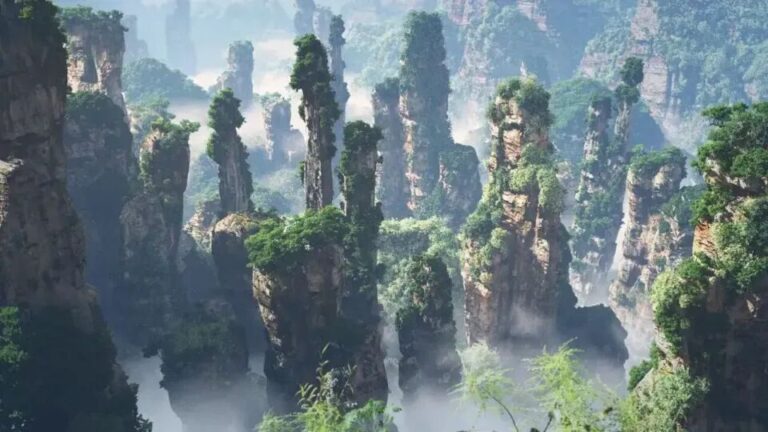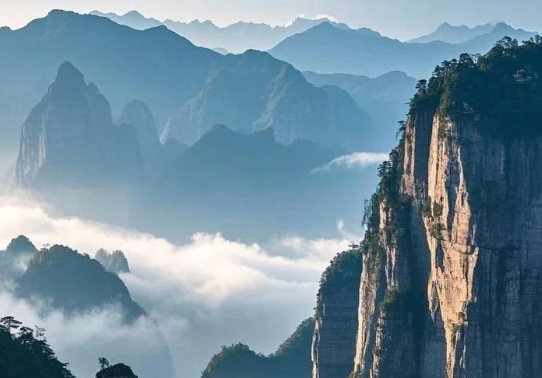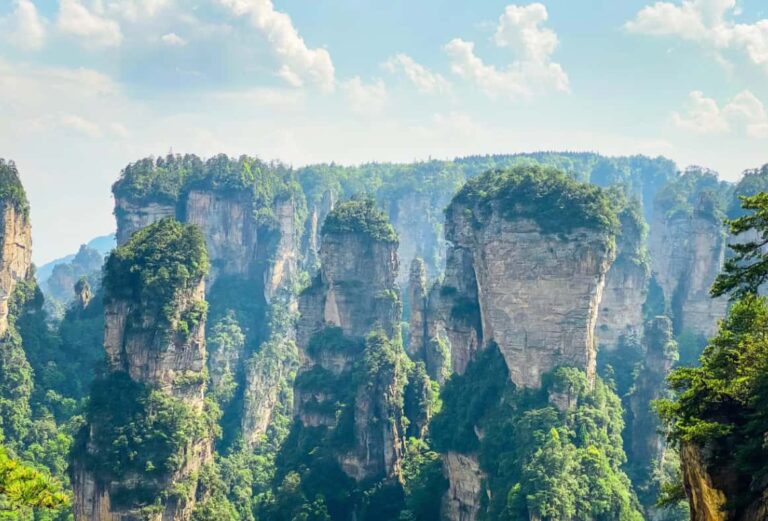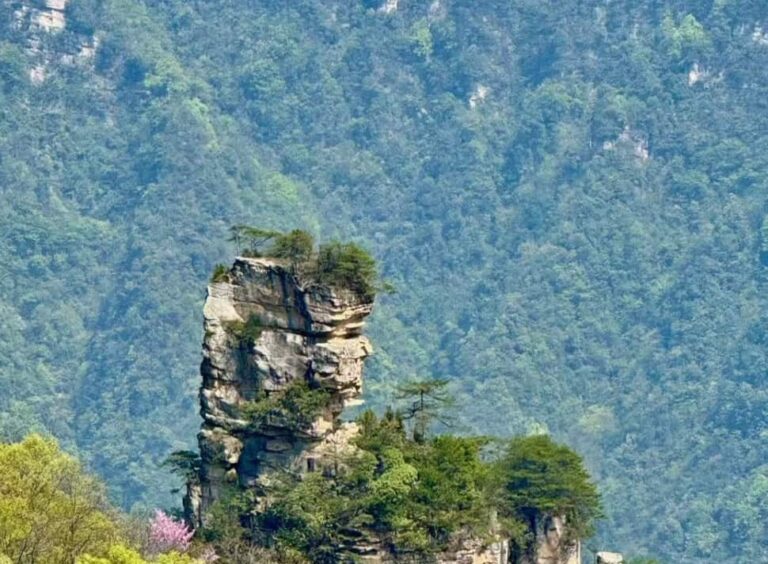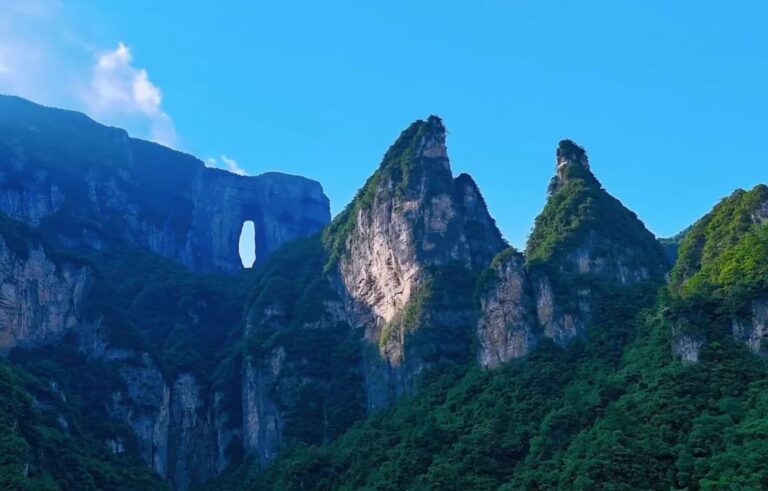Exploring Zhangjiajie’s Binlang Valley and Jia’er Gorge
The picturesque Zhangjiajie is located in the northwestern border region of Hunan Province and is a national 5A-rated scenic area. some delicate and beautiful, some majestic and imposing, some flat like a platform, and some slender like a sword. Those who have visited the scenic area know that Zhangjiajie boasts both the diverse karst landforms and the rare sandstone peak forest landscapes that are unparalleled worldwide.
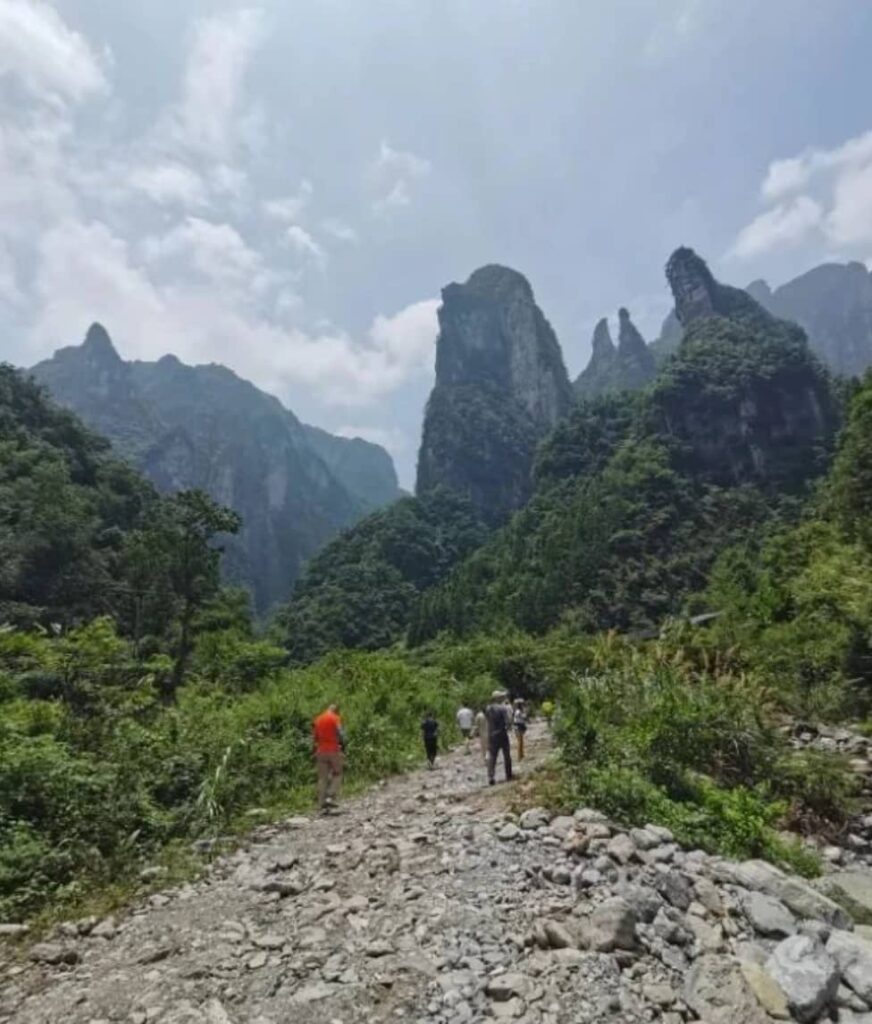
What left the deepest impression were the wooden houses in the mountains, the crystal-clear streams, the local pork, cured pork feet, and baked potatoes. The pigs raised by the mountain villagers, along with the cured meat and pork feet, were laid out on long tables. I asked the elderly villager, “Are these potatoes chopped up for the pigs to eat?” The old man replied, “Yes, a large basin every morning.” The wooden houses and roofs made of tree bark At 7 PM, the bonfire party begins, with karaoke, tea drinking, and chatting, a scene of revelry and indulgence.
Zhangjiajie Binlang Valley, known as an outdoor paradise, is located in Luotaping Township, Yongding District, Zhangjiajie City, Hunan Province, and refers to the collective outdoor trails of the township. Featuring natural landscapes such as gorges, caves, and sinkholes, it is one of the classic hiking routes in the Greater Xiangxi region, with a total hiking time of approximately two hours.
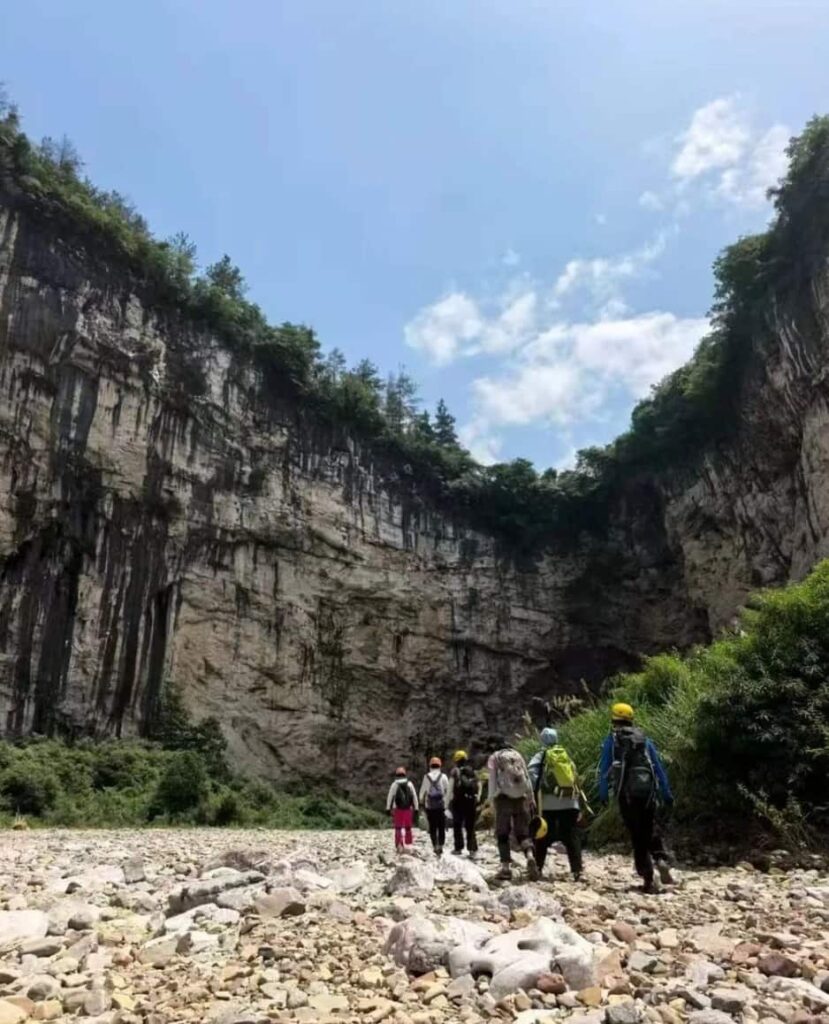
This area is rich in Zhangjiajie sandstone and karst landscapes, with forest and grassland coverage exceeding 80%. Climbing the cave slopes covered in moss and ferns, one can see the “City of Angels” and the natural bridge suspended in the air.
Along the way, towering stone pillars pierce the clouds, and sheer stone walls stretch for miles. These walls have gates leading into the depths of the cave labyrinth. The caves are not deep, and the terrain is flat. Upon exiting the cave, the landscape suddenly opens up, revealing Star Valley, where lush green grass blankets the ground, resembling a utopian paradise.
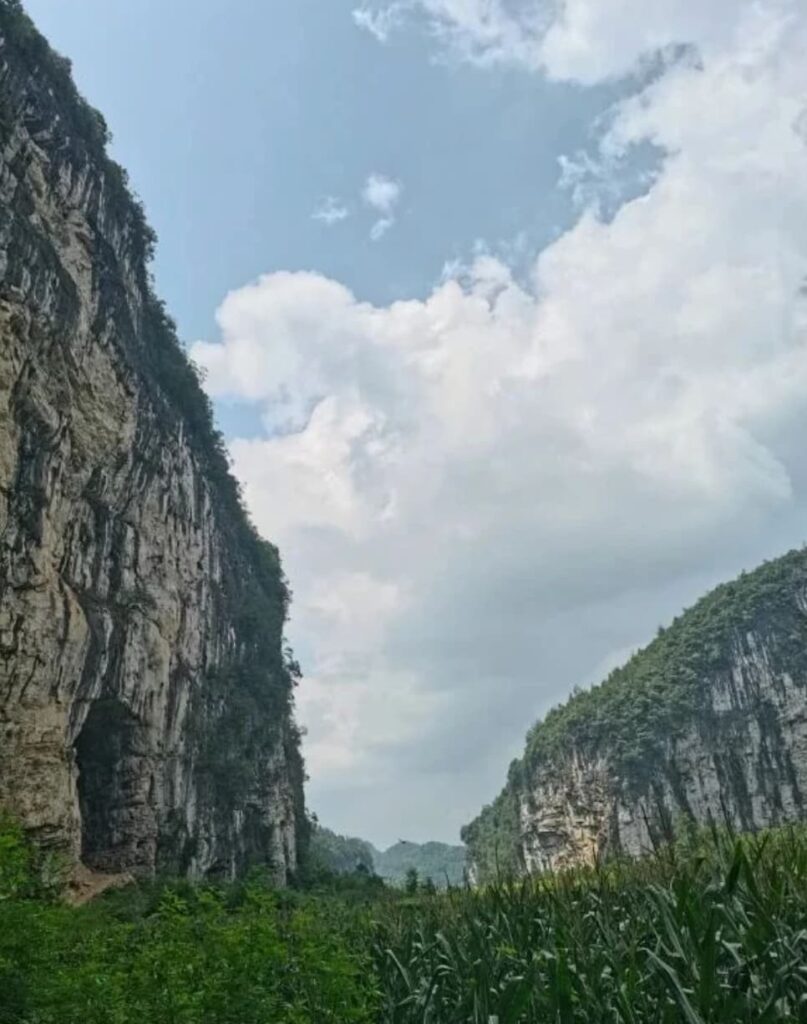
This is the youthful stage of Zhangjiajie’s 380-million-year geological evolution. It is also the purest and most primordial history of Zhangjiajie.
Entering Binlang Valley, the first sight is the karst cliffs at the valley entrance. The pits in the cliffs are embedded with purple wild azaleas. When the wind blows, the petals drift onto the gray-green stones, evoking the delicate poetic imagery of “moss traces on the steps are green, grass color enters the curtains.” As you walk further in, the path widens slightly, and the crunching sound of crushed stones underfoot echoes like the valley yawning. Suddenly, a emerald pool hidden between the rock walls comes into view. The water surface is so still it reflects the narrow strip of sky above, and sunlight shimmers on the surface, scattering like gold foil across the pool.
The gentleness of Binlang Valley is merely an appetizer. Turning a mountain ridge, the ruggedness of Jiaer Gorge suddenly comes into view. The gorge resembled a crack split open by a giant axe, with sheer rock walls rising vertically on either side. At its narrowest point, only one person could pass sideways. Looking up, the sky was compressed into a sliver of silver.
The wind whistled through the rock crevices, carrying a chill that made the back of one’s neck tense. The path through the gorge was truly treacherous. The rocks beneath our feet are slippery from years of seepage, as if coated with lard. Every step must be taken with caution, not daring to be careless.
In some places, the rocks protrude, forcing us to tiptoe over them, resembling a “stone dance”; in other places, old vines hang from the rock walls, and you have to grab the vines to climb up, but the dew on the leaves wets your hands, making them slippery and hard to grip.
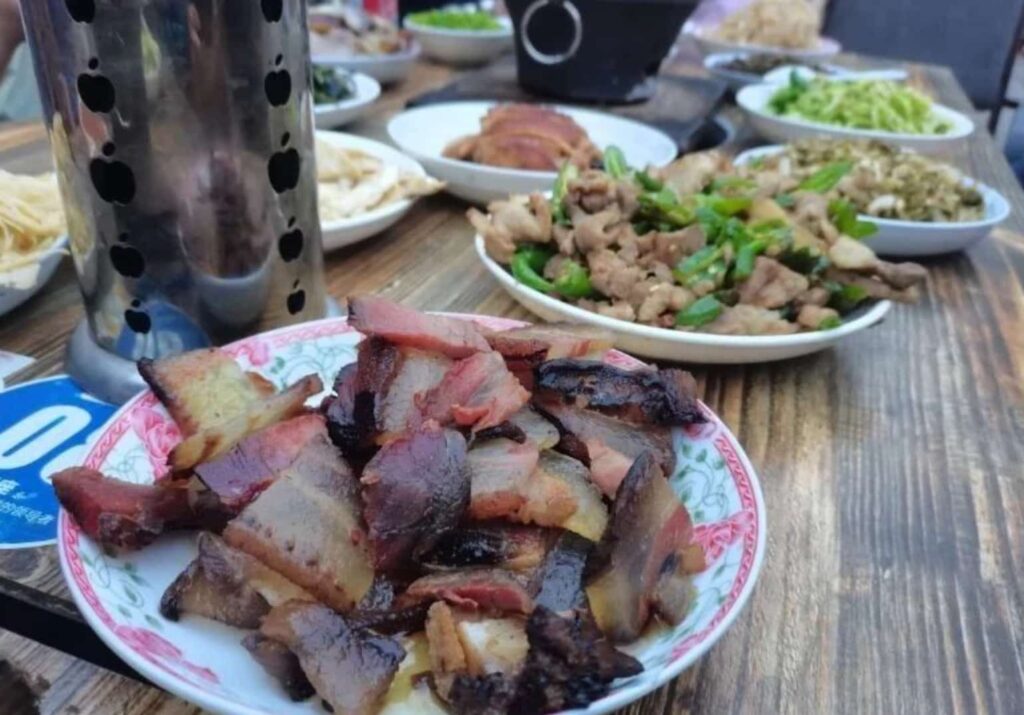
Sometimes we move cautiously like turtles, sometimes lightly like mountain goats, sometimes playfully like monkeys, and sometimes clumsily like bears, using both hands and feet to move our bodies—–. After walking for about half an hour, a steep slope appeared ahead, nearly vertical in incline. The slope’s surface, eroded by flowing water, was so smooth it made one’s heart race. As we hesitated, the guide had already reached the top of the slope.
The higher we climbed, the brighter the light became, and we could faintly hear bird songs from beyond the gorge. Everyone perked up and quickened their pace. Finally, after rounding a bend and climbing the cement steps, the scene before them suddenly opened up— flowers and grass swayed gently, the landscape was lush and green, distant mountain peaks stretched endlessly, as if draped in a green cloak, and the setting sun hung on the mountain peaks, dyeing the clouds a golden red.
Looking back at Jia’er Gorge, the narrow crevice was now hidden in the twilight, but the danger and wonder of the gorge were deeply etched in their hearts. Someone remarked, “This Jia’er Gorge is like life—it seems difficult to traverse, but as long as you persist step by step, you will eventually reach the exit.”

